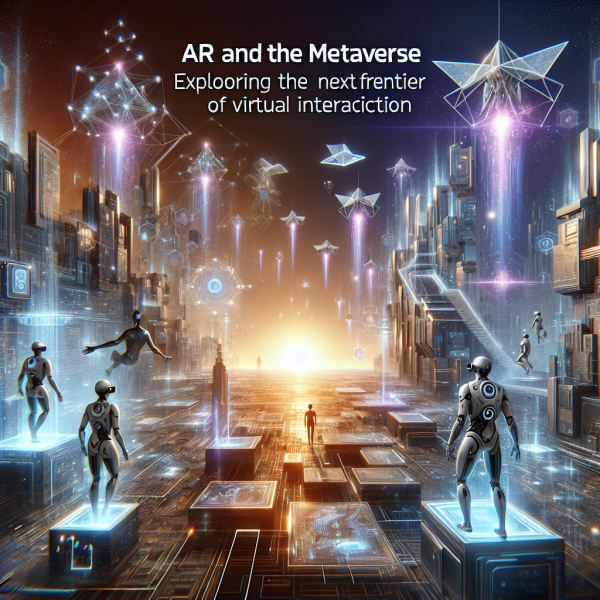Breaking Barriers: The Latest Innovations in Quantum Computing Technology

Breaking Barriers: The Latest Innovations in Quantum Computing Technology
As the digital landscape continues to expand at an astonishing pace, quantum computing emerges as a groundbreaking frontier in technology. Unlike classical computers, which process information using bits as either 0s or 1s, quantum computers leverage the principles of quantum mechanics to utilize qubits—quantum bits that can represent both 0 and 1 simultaneously. This unique capability allows quantum systems to perform complex calculations at unprecedented speeds, unlocking solutions to problems that were previously thought insurmountable. This article explores the latest innovations in quantum computing and how they are bridging the gap between theoretical potential and practical application.
1. Advancements in Error Correction
One of the most critical challenges in quantum computing has been error rates associated with qubit manipulation. Quantum systems are incredibly sensitive to environmental noise, leading to decoherence and errors in computation. Recent advancements in quantum error correction schemes, such as the introduction of cat codes and surface codes, have made significant strides in this area.
Researchers are developing more efficient methods for detecting and correcting errors without the need for excessive overhead. These innovations allow quantum computers to scale more effectively and maintain coherence over longer periods, making them more reliable for practical use.
2. Hybrid Quantum-Classical Algorithms
To leverage the strengths of both classical and quantum computing, recent innovations have seen the development of hybrid quantum-classical algorithms. Techniques such as Variational Quantum Eigensolver (VQE) and Quantum Approximate Optimization Algorithm (QAOA) represent a paradigm shift in how quantum computers are utilized.
These algorithms capitalize on the computational prowess of quantum systems for specific tasks while relying on classical systems for others. This approach not only accelerates the problem-solving process but also serves as a transitional methodology, enabling businesses to gradually adopt quantum solutions without overhauling existing infrastructures.
3. Quantum Supremacy Achievements
Visibility and interest in quantum computing surged significantly when companies began demonstrating “quantum supremacy”—the point at which a quantum computer can perform a calculation beyond the reach of any classical computer. Google’s 2019 announcement of achieving quantum supremacy with its 53-qubit quantum processor, Sycamore, was a landmark moment in this field.
Following Google’s lead, companies like IBM and Rigetti have made significant progress in scaling their quantum hardware and replicating these victories. Recent advancements in superconducting qubits and optical quantum computing systems have spurred competition and collaboration, where researchers share insights, codes, and algorithms to push the boundaries of what is possible.
4. Quantum Networking and Communication
The concept of a quantum internet is gaining traction, promising highly secure communication channels and the potential for distributing quantum entanglement over vast distances. Significant strides have been made in quantum key distribution (QKD), which allows two parties to share a secret key that is theoretically immune to eavesdropping, thanks to the principles of quantum mechanics.
The development of quantum repeaters, which enable entangled states to be shared over long distances, is crucial in building a functional quantum network. Tech giants and research institutions are investing heavily in these technologies, enacting pilot projects and forming collaborations to explore the feasibility and application of quantum communication.
5. Increased Accessibility and Open Source Quantum Computing
Accessibility is a crucial factor in the growth of quantum computing technology. Platforms like IBM’s Quantum Experience allow researchers, students, and developers from across the globe to access quantum processors through the cloud. Open-source quantum programming libraries, such as Qiskit and Cirq, are aiding the widespread development of quantum applications, providing tools that simplify complex quantum algorithms and make them more approachable for a broader audience.
This democratization of technology fosters innovation at a grassroots level, with educators and students around the world learning and experimenting with quantum systems.
Conclusion
The realm of quantum computing is teeming with potential, as barriers that once seemed insurmountable are now being dismantled through groundbreaking technological innovations. As researchers and innovators continue to break new ground—from error correction to hybrid algorithms, quantum supremacy achievements, networking advancements, and increasing accessibility—the future of quantum computers looks promising. The journey from theory to practical application may still be in its early stages, but with the pace of innovation accelerating, quantum computing is poised to transform industries and redefine problem-solving paradigms in ways we’ve only begun to imagine. As we continue down this path, the horizon glows with the promise of a quantum age, rich with possibilities.













